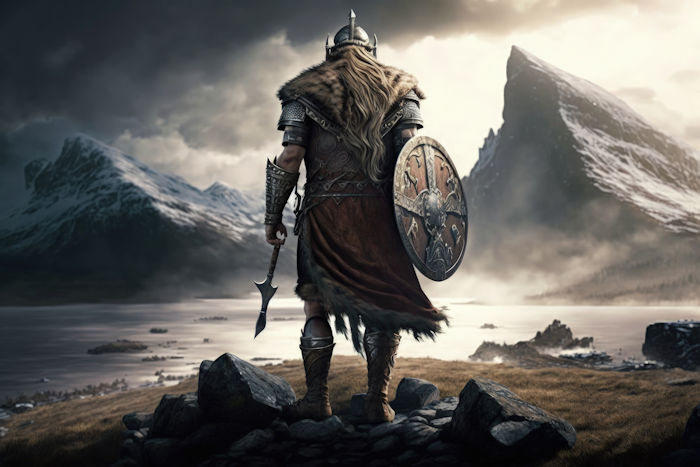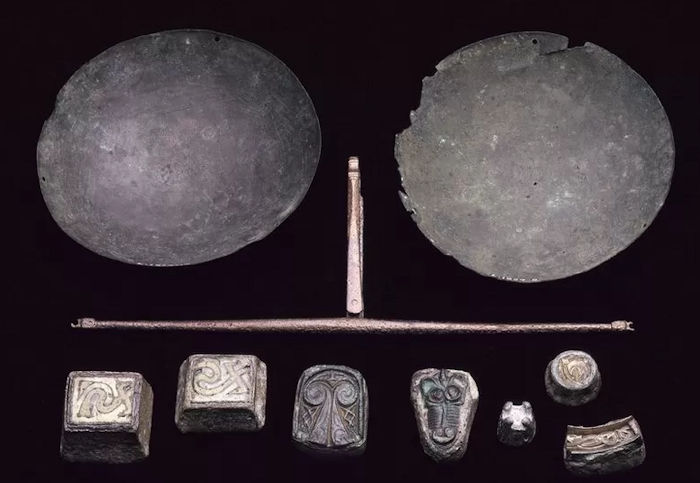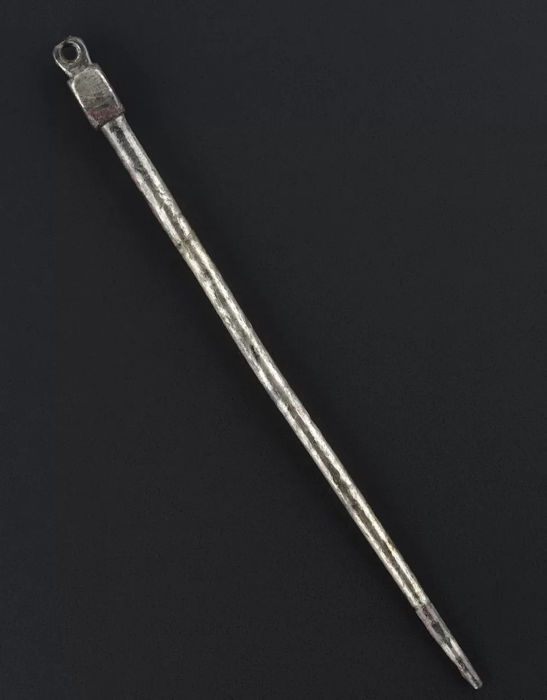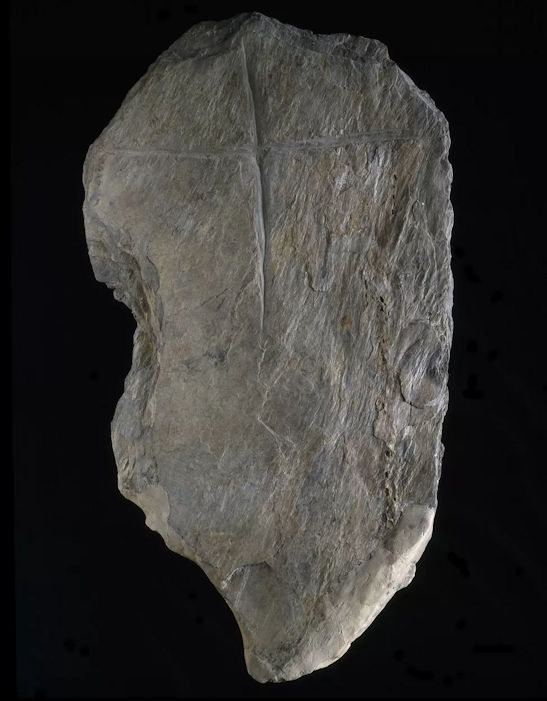Rare Viking Boat Burial At Kiloran Bay In Colonsay, Scotland Remains A Fascinating Find
Ellen Lloyd - AncientPages.com - Generally speaking, one must say that all Viking boat burials are rare because most of the notable burial finds throughout the Viking world are cremations. Archaeologists have unearthed Viking ship burials, but not in large numbers. Most unearthed Viking boat burials have been reported from Scandinavia and occasionally UK islands. Viking funeral traditions were complex, but based on archaeological evidence, it seems that the funeral boat or wagon was a practice that was reserved for the wealthy.
Credit: Adobe Stock - Deivison
What makes the Viking boat burial at Kiloran Bay in the Inner Hebrides exceptionally unique is that it remains Scotland's single richest male Viking burial site to be found so far.
The Viking boat burial on the coastal meadow, called machair, at Kiloran Bay in Colonsay was discovered in 1882 "after rabbits, digging in the soft machair, scooped up some boat rivets." 1
Based on the large number of Viking graves in Colonsay, it is evident the region was important to Norse warriors.
The first burial excavation was conducted by Sir M McNeill and W Galloway, and later in 1884, a new study was made of the burial.
Scales and elaborately decorated weights were found in the Viking grave. Credit: National Museum of Scotland
"On the surface the grave was marked by a rectangular enclosure of slabs set up edgeways, 15 ft. long and 10 ft. broad. All over the area within this space there were found a great quantity of nails and rivets, mostly with parts of the wood still adhering to them, a certain indication of a ship-burial." 2
Scientists suspected they had made a unique archaeological discovery, and they were right. The research team unearthed the skeleton of a man who had been buried next to his horse.
A silver dress pin was among the finds. Credit: National Museum of Scotland
The man's body “had been placed resting upon its left side, with the head pointing toward the east, and the knees bent so that they touched the breast. Several objects of iron were discovered in the sand close to the skeleton, a two-edged iron sword, an axe, the boss of a shield, a cauldrom of iron, etc. Between the chin and the knees there was found a pain of scales, made of bronze, and close to them the balance and seven leaden weights. 2
There was also a selection of tools vital for trading "and a selection of coins, which dated the burial after the year 850." 3
A boat had been placed over the top of the man's grave chamber. The rich collection of burial goods suggested the Viking was of high status, possibly a chieftain well-equipped for fighting and trading.
In most respects, this find had the “characteristics of a regular Norwegian grave from the Viking Age. The ship, the horse, the weapons, and other objects correspond exactly to the requirements for a man’s grave in Norway a the same period.” 2
The archaeological discovery also offered important insight into the contacts between Scotland, Ireland, and the Viking homeland in the early tenth century.
However, scientists soon learned this particular Viking boat burial had a more complex story to tell.
Certain archaeological finds in the grave were unusual, suggesting there is still much to learn about pagan burial rites. This grave provided information about the interaction between the Pagan and Christian faith at the time of Viking settlement in Scotland.
"Two of the slabs forming the enclosure were marked with a cross, which though executed in a very primitive manner, must be supposed to have some religious significance in connection with the grave." 2
Scientists were surprised to find Small slabs marked with a Christian cross at the pagan burial site. Credit: National Museum of Scotland
The placing of small slabs incised with crosses in the grave chamber continues to fascinate scientists. According to Prof James Graham-Campbell, an expert on pagan Norse graves of Scotland, this is not what we "would expect to find in a pagan burial rite."
Prof Graham-Campbell points out that Colonsay, at the time, would have been a Christian island. Perhaps one of the Viking's relations was a Christian and made a token gesture.
Written by - Ellen Lloyd – AncientPages.com
Copyright © AncientPages.com All rights reserved. This material may not be published, broadcast, rewritten or redistributed in whole or part without the express written permission of AncientPages.com
Expand for references- Steven McKenzie - Revisiting one of Scotland's rarest Viking burials, BBC
- Schetelig, H. (1906). Ship-Burial At Kiloran Bay, Colonsay, Scotland, Saga-Book, 5, 172–174.
- Viking Archaeology - Viking Ship Burial Kiloran Bay, Colonsay
More From Ancient Pages
-
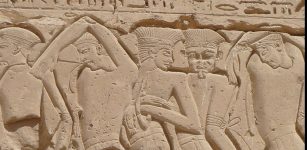 Mysterious Sea People: Many Theories But Their Origin Is still Unknown
Civilizations | Feb 24, 2015
Mysterious Sea People: Many Theories But Their Origin Is still Unknown
Civilizations | Feb 24, 2015 -
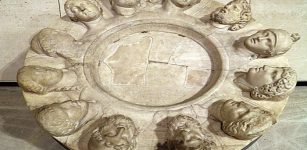 ‘Altar Of Twelve Gods’ At Gabii, Italy Was Once An Important Ancient Place
Civilizations | Apr 1, 2023
‘Altar Of Twelve Gods’ At Gabii, Italy Was Once An Important Ancient Place
Civilizations | Apr 1, 2023 -
 Medicine in Antiquity: From Ancient Temples To Roman Logistics
Archaeology | Apr 13, 2018
Medicine in Antiquity: From Ancient Temples To Roman Logistics
Archaeology | Apr 13, 2018 -
 Livestock And Dairying Led To Dramatic Social Changes In Ancient Mongolia – New Study
Archaeology | May 11, 2022
Livestock And Dairying Led To Dramatic Social Changes In Ancient Mongolia – New Study
Archaeology | May 11, 2022 -
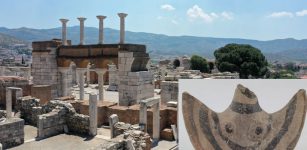 3,200-Year-Old Mycenaean Statuette Sheds New Light On The Hittites
Archaeology | Jun 22, 2022
3,200-Year-Old Mycenaean Statuette Sheds New Light On The Hittites
Archaeology | Jun 22, 2022 -
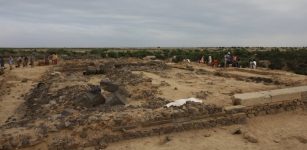 African Kingdom Of Axum – Ancient Ruins Of Early Churches Unearthed
Archaeology | Dec 9, 2022
African Kingdom Of Axum – Ancient Ruins Of Early Churches Unearthed
Archaeology | Dec 9, 2022 -
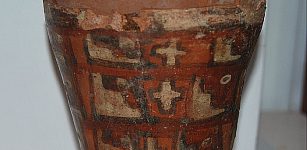 Qeros: Study Of Drinking Vessels Provide New Clues To Long Traditions Of Andean People
Archaeology | Jul 27, 2020
Qeros: Study Of Drinking Vessels Provide New Clues To Long Traditions Of Andean People
Archaeology | Jul 27, 2020 -
 Lhasa’s Potala Palace: Greatest Building In Tibet With History Of 1300 Years
Civilizations | Nov 23, 2018
Lhasa’s Potala Palace: Greatest Building In Tibet With History Of 1300 Years
Civilizations | Nov 23, 2018 -
 Handshaking Is An Ancient Tradition – When, Where And Why Did We Start To Clasp Hands?
Ancient History Facts | Aug 30, 2019
Handshaking Is An Ancient Tradition – When, Where And Why Did We Start To Clasp Hands?
Ancient History Facts | Aug 30, 2019 -
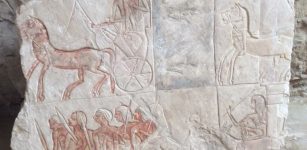 Unusual Scenes Painted On The Walls Inside Egyptian Tomb Of General Iwrkhy – Discovered
Archaeology | May 10, 2018
Unusual Scenes Painted On The Walls Inside Egyptian Tomb Of General Iwrkhy – Discovered
Archaeology | May 10, 2018 -
 Controversial Hollow Earth Theory – Questions And Answers – Part 3
Featured Stories | Jun 28, 2019
Controversial Hollow Earth Theory – Questions And Answers – Part 3
Featured Stories | Jun 28, 2019 -
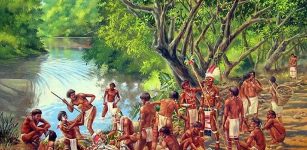 Taíno Indians Are Not Extinct – Ancient Tooth Reveals Indigenous Americans Still Have Living Descendants In The Caribbean
Archaeology | Feb 21, 2018
Taíno Indians Are Not Extinct – Ancient Tooth Reveals Indigenous Americans Still Have Living Descendants In The Caribbean
Archaeology | Feb 21, 2018 -
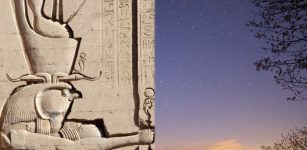 Ancient Egyptians Knew About ‘Demon Star’ Algol’s Variability 3,000 Years Before Western Astronomers
Archaeology | Nov 13, 2018
Ancient Egyptians Knew About ‘Demon Star’ Algol’s Variability 3,000 Years Before Western Astronomers
Archaeology | Nov 13, 2018 -
 Mystery Of Count St. Germain – He Claimed To Have Lived For Several Centuries
Featured Stories | Sep 4, 2014
Mystery Of Count St. Germain – He Claimed To Have Lived For Several Centuries
Featured Stories | Sep 4, 2014 -
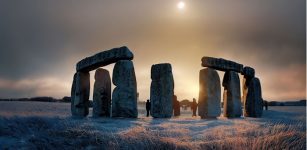 Why Winter Solstice Matters Around The World
Archaeoastronomy | Dec 20, 2022
Why Winter Solstice Matters Around The World
Archaeoastronomy | Dec 20, 2022 -
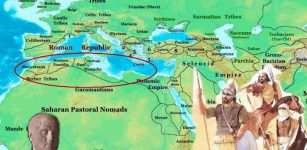 On This Day In History: Emperor Gordian II Loses The Battle Of Carthage – On Apr 12, 238 AD
News | Apr 12, 2016
On This Day In History: Emperor Gordian II Loses The Battle Of Carthage – On Apr 12, 238 AD
News | Apr 12, 2016 -
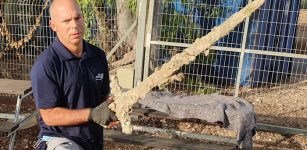 A 900-Year-Old Crusader Sword Discovered Off The HaCarmel Coast, Israel
Archaeology | Oct 20, 2021
A 900-Year-Old Crusader Sword Discovered Off The HaCarmel Coast, Israel
Archaeology | Oct 20, 2021 -
 On This Day In History: Sir Thomas Brisbane, Astronomer, Soldier And Governor Was Born – On July 23, 1773
News | Jul 23, 2016
On This Day In History: Sir Thomas Brisbane, Astronomer, Soldier And Governor Was Born – On July 23, 1773
News | Jul 23, 2016 -
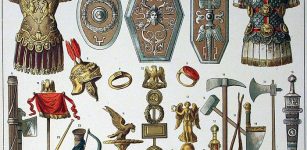 Source Of Ancient Roman Silver Was The Iberian Peninsula
Archaeology | Dec 18, 2021
Source Of Ancient Roman Silver Was The Iberian Peninsula
Archaeology | Dec 18, 2021 -
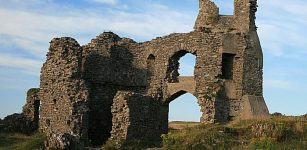 The Ruins Of Pennard Castle And The Tale Of Faeries’ Curse
Featured Stories | Mar 2, 2016
The Ruins Of Pennard Castle And The Tale Of Faeries’ Curse
Featured Stories | Mar 2, 2016

